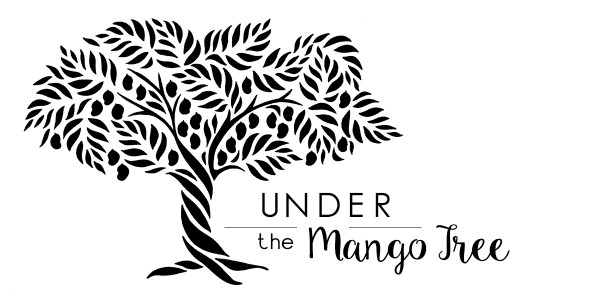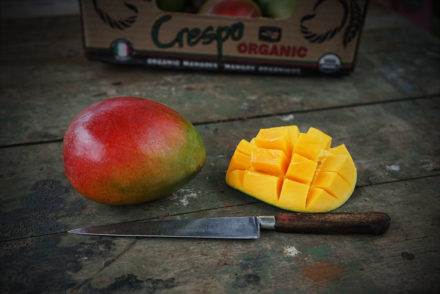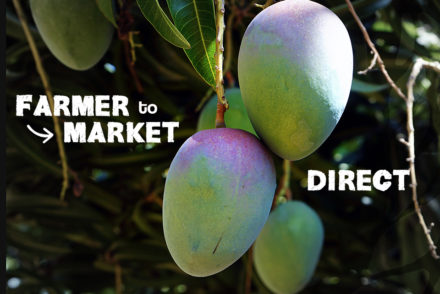A mango-centric exploration of the year’s most anticipated influences
Food trends are often a bit waggish, but the current buzzing trends seem poised for positive impact and that excites me. I think the timing is ripe for all of us in mangoes and produce to take a thoughtful look and see how we can harness them to benefit farmers, farming communities, consumers, and everyone’s bottom lines.
I explore 2024’s most anticipated food trends through mango-colored glasses, drawing insights from writers, researchers, mango enthusiasts, shoppers, marketers, culinary professionals, and mango experts. I aim to uncover the meaning within these trends, demonstrating how produce and mangoes align with them at retail level and across the entire chain. My goal is to help our industry foster deeper significance in our practices, embracing the interconnectedness between the business, the eating and the human elements and, above all, spread more #MangoJoy in 2024.
It’s tempting to get caught up in the frivolity of trends, but this year’s trends ask us to reevaluate, and that gives me some hope. Matt Klein, Reddit’s Head of Global Foresight, wisely notes, “We should remember laws of physics and get back on track.” This is exactly what these trends ask us to do. Amidst the pressure to follow every new idea and viral trend, staying rooted to authenticity is key. I am happy to report this is an actual concept trending for the year. The produce industry has a chance to provide meaning, and these trends will make it much easier for all of us to do so.
I examined countless food trend articles and sifted through emails from Crespo mango enthusiasts over the past year. I juxtapose these observations with insights gathered from industry, culinary experts, certain retailers and our favorite mango enthusiast, The Mango Hunter Jeff Ray, who has an invaluable vantage point and a lot of constituents. Several trends did stand out. When I applied all these trends to mangoes, I noticed a strong connection between the orchard and the table. Between growing and eating. Between people, planet, and food.
The harmony in the trends show that consumers are increasingly seeking more cultural adventure and spice in their shopping and eating lives; the hotter the better. The desire for luxury is also returning to basics, emphasizing quality and experience above over-the-top, showing off vibes. So too, a rising skepticism of marketing invites a return to simplicity, like putting plants back in plant-based diets. Nutrition is still trending, as it has been for several years, but it’s shifting toward a more holistic healthspan purview and healthy interdependent living and eating. Convenience remains a trend but is evolving to cater to consumers’ desire for clever and convenient options for home cooking, intersecting with the emerging budget-conscious quality trend amidst economic skepticism. Despite the prevalence of online purchases, pick-up, and delivery, the in-store shopping experience is predicted to make a big comeback, and, with that, shoppers are expecting to be wowed without breaking the bank.
What does all this mean for produce, mangoes and the mango industry?
Above all, every trend centers around the essence of cooking and eating with a harmonious interplay of connectedness. What one side produces the other side can indulge in, and it’s not lost on shoppers that their health, the health of the planet, and the people producing their food are connected. My advice for all of us is that we do not overlook this crucial aspect of connection.
Global Flavor & Spice with Heat, Sweet & Sour
The global spice trend is literally one of the hottest food trends emerging for 2024. Certainly, the sriracha shortage might have motivated some to find alternative spicy flavors. Adventurous, authentic and diverse culinary experiences are on the rise, fueled by an explosion of curiosity for global flavors and fusions. This momentum is most definitely fueling fresh mango sales, according to our research, and we see it’s inspiring more mango products to be born. (Even I have a few spicy mango products in the works.)
More people are cooking with mangoes and specifically adding spice and heat to these adventures. Access to increased cultural information through travel, social media and food documentary style TV & videos (Padma Lakshmi’s Taste the Nation, for example) has garnered a larger audience for spicy global cuisines than ever before. Throwing in the emerging health benefits associated with spicy and fermented ingredients, this has all led to a desire among home cooks to experiment, learn, and try more.
It’s in our best interest to seek out and highlight these cuisines and recipes. “The more that global recipes are showcased, I can see how more mangoes would be sold.” Tina DeGraff Martinez, Food Producer at Hearst Lifestyle Group, observes this distinct trend in her work at Good Housekeeping where home cooks increasingly embrace a spice-forward global perspective in recipe choices. “The trend encourages individuals to venture beyond their culinary comfort zones, exploring and incorporating unfamiliar ingredients, including mangoes.” Martinez notes that this shift increases demand for diverse flavors and stimulates the supply chain; she sees it firsthand in her work. “As the spicy-global trend grows, momentum builds. It fosters greater distribution, making seemingly exotic options, like mangoes, more accessible, even in remote households.”
Luxury Redefined
One food trend that excites me is the desire for simple luxury in food experiences, redefining luxury as simply good quality. It’s not about spending more; it’s about treating yourself to more without paying more. This trend ups the ante and goes beyond the physical attributes, emphasizing the overall quality of the surrounding experience, a realm where mangoes and #MangoJoy fit perfectly. Shoppers of all ages nationwide, and particularly Gen Z, are increasingly drawn to mangoes for the premium experiences they provide. Many frequent travelers, or those with a penchant for recreating exotic dining experiences, seek to incorporate mangoes into the latest global culinary trends or to induce sweet nostalgia.
I think Kim Severson, NYT Cooking Correspondent, wrote it best in her 2024 food predictions article, 9 Predictions for How We’ll Eat in 2024: “Luxury will be found less in cost or rarity of an ingredient but rather in the quality of a product that makes life easier, interesting and more fun.”
The key to fulfilling this trend for our industry is in our ability to deliver premium quality. This means fostering the connection between the quality of the fruit produced (including climate and ethical impact at source) to the eating and cooking experience, which means we can no longer compromise flavor when it comes to our fruits and vegetables.
Consumers are willing to pay more for mangoes, but complaints about poor quality and inconsistency of flavor abound. Shoppers express frustration over inconsistent ripeness of mangoes and the fact that some never ripen. The industry faces distribution challenges, particularly with cold temperatures affecting quality. Addressing this issue is crucial. Retailers storing and displaying mangoes in cold coolers contribute to these flavor defects. Solving temperature control problems is essential for the mango industry to meet the demands of this trend.
The industry also needs to cease marketing and pricing mangoes as if they were rare specialty items. A mango is better suited as a volume item and should be priced as such. Jeff Fairchild of OGC/New Seasons Market advocates for more aggressive pricing on mangoes, emphasizing their potential to be both luxurious and reasonably priced. He suggests building bold displays, placing them across various departments, and highlighting the Ataulfo mango, as it is known to attract shoppers with its bright yellow presence.
Marketing Skepticism
Underneath this trend implies a commitment to discernment and dedicated efforts. I firmly believe that, when it comes to mangoes or anything else, consumers deserve this level of commitment from us. Shoppers have been inundated with influenced and sponsored content and an overall lack of expertise. Marketers have exploited the rapidly advancing technology landscape to spread fluffy messages far and wide. In the spirit of 2024, products with authenticity seem likely to prevail. That gives an upper hand to fruit and vegetables and specifically to farmers who prioritize quality (flavor) and sustainability within their farming systems and communities.
For produce, I think the emphasis with this trend lies most predominantly on the supply chain and more specifically prior to retail level. Certifications, such as the USDA organic certifications as well as fair trade and other ethical certifications and traceability must carry more substance (less fluff) and the future seems to be trending that way, as seen in this year’s final USDA rule strengthening organic enforcement (something consumers had been requesting for a while). The rule will significantly impact the organic industry and is intended to foster increased trust by strengthening oversight and enforcement of all organic products, on the production side and also handling and distribution channels.
An overlooked opportunity for authentic marketing shared by Jeff Fairchild of OGC/New Seasons Community Market: treating floor staff as educated consumers. Recognizing them as pivotal salespeople at the point of sale and teaching them the full story of as many products as possible from farm-to-table. This can by exacerbated by leveraging social media, LinkedIn, and newsletter marketing and for those with budgets more elaborate approaches like product and culinary training. Drawing from my own experience in cooking and food education, I’ve found the latter to yield significant results, fostering increased and repeat sales, authentic connections between consumers, store staff, and farmers, and lots of overall consumer joy.
Creativity is key for this trend. Years ago, my Brooklyn cooking school, Ger-Nis Culinary & Herb Center, introduced seasonal produce training for floor staff, managers, and higher-ups in collaboration with Whole Foods Market. Covering storage, choosing, handling, tips, and recipes, we fostered both education and enthusiasm in NYC and NJ’s produce departments. This successful partnership inspired “Mango Higher-Ed” for Crespo in the Bay Area, which did basically the same thing, but geared fully toward Crespo Organic Mangoes. It was a successful program that still reaps rewards years later.
Communication expert Laura Baddish, Head of The Baddish Group, which specializes in marketing platforms and communication strategies for food, wine, spirits and lifestyle brands, recommends a simpler version of this and encourages more grocery stores to “take to the gram.” She furthers, “During the pandemic many stores had to stop live demos and sampling which was one of the most authentic ways to connect with their shoppers. Instagram marketing is great and an easy substitute. And it’s a trend that I see is just getting started, reaching the customers virtually where they shop! Film the produce manager showing how to cut the fruit, what to look for when buying, what the flesh looks like, what it should taste like and share it with your customers on an Instagram reel or story – that’s where they are looking for information and trends!”
Plants Back in Plant-Based
Whole Foods Market consistently nails the annual food trends list, leveraging its influential position and extensive product catalog. I’d argue that they are the ones with their finger on the pulse of products, witnessing a substantial influx of new and creative items each year.
Number one on their list this year is “Put the “Plant” Back in “Plant-Based.” While most trend spotters are adamant that plant-based diets are here to stay and veganism will increase, many are banking on protein-forward products made with plants. Think veggie burger versus impossible burger (I personally think of my black bean chili mango burger). A bevy of new products is appearing made with beans, mushrooms and nuts and, according to Whole Foods, we should see many more brands going “purist” (again, proving the interconnectedness of all these trends).
Many of the trend researchers point to the success of plant-based menus around the world using more plant-based products as the driving force behind this trend. The proof on this one might be in the beet-pudding at Chef Daniel Humm’s Eleven Madison Park, which successfully transitioned to an all-vegan menu, earning back its prestigious status with 4 stars from The New York Times and 3 from the Michelin Guide after a rough patch and steep learning curve that any pioneer would face. The restaurant has now mastered the art of plant-based fine dining, using vegetables and fruits and nuts. Chef Humm’s bold move to go fully plant-based during the middle of the pandemic has absolutely reshaped the fine dining landscape. Fine dining is redefining luxury, too, and the ripple effect of such vegetarian and vegan moves has proven lucrative for retailers as home cooks seek to elevate plant-based meals at home.
This one is a no brainer opportunity for produce. If people are going to put the plants back in produce, guess what they need? Produce. Give them quality, give them diversity, and wow them with your displays and in-store and virtual information. Inspire them to get excited about seasonality. Leverage your social media channels by offering less vegan smoothie recipes and more elaborate plant-based meals.
Holistic Healthspan
The evolving trend of prioritizing a healthier lifestyle over mere longevity has placed food and dietary choices at the forefront. This interconnected approach emphasizes the interplay between individual health, collective well-being, and the health of the planet. Aligning with this trend is the rapidly advancing theme within the agricultural industry—regenerative agriculture. This practice aims to enhance the health of soil, water, crops, and people by recognizing and fostering the interconnectedness of these elements.
Consumers are actively contributing to this trend through various avenues related to food. From the resurgence of eating actual plants, to engaging in agro-tourism, to fostering increased social connections centered around clean eating and drinking, there exists a multitude of ways eaters seem to be supporting this more holistic approach to health and well-being.
The promotion of a “slow foods” style of health underscores a commitment to a deliberate approach to well-being. This approach seems poised to make a significant wave in grocery stores. Not just in terms of shoppers looking for nutrient-dense foods that provide a high concentration of essential vitamins, minerals, and other beneficial compounds, but products that have healthy interconnectedness throughout the supply chain, cleaner and more ethical routes of trade. This means shoppers are seeking a lot more transparency at the point of sale and they want to register it quickly.
Jonathan Kitchens, Produce Coordinator at Good Earth Natural Foods, describes the current healthspan trend simply as connection and reminds us that this is something organic shoppers have long supported in their food choices. “Connection is the key to healthspan. Connection to yourself, others and the more-than-human world. The modern food system operates through a legacy of separating humans from the rest of the web of life and thereby limiting the capacity for health.”
“In the few seconds that it takes to prepare a mango to eat, one can appreciate the beauty of the fruit, the human hands that went into working the land for production in organic agricultural systems, and the microbial community in our guts that convert sunlight and minerals captured in the mango into life-supporting energy. In this moment of connection, we deepen our healthspan.”
Our industry must improve in connecting these dots for consumers, bridging the gap from orchard to table. The lack of transparency in outdated brokerage-style produce trading systems created a void of real information and thus meaning and connection, all of which I think also has led to a lack of attention on flavor and experience. Consumers seek more direct, farm-to-table flavor-filled foods and demand easily accessible and digestible information about their purchases. It’s a reasonable expectation, and if we don’t take the lead in educating consumers about produce, who will?
Next Level Convenience
I’ll be honest, as someone who cooks all meals and thoroughly enjoys it, the convenience wave has never been my favorite, but this new trend that rekindles people’s connections with their kitchens and aims to make cooking easier, I really dig! Climate-conscious shoppers don’t want to forgo freshness or sustainability for convenience. Busy people are looking for advice and products that optimize shopping, nutrition, time, flavor and joy without breaking any budget. People are cooking and eating at home, and they are begging us for help with this trend.
Produce with Pamela 2024 Food Trends Pamela Riemenschneider, Retail Editor at the Blue Book, nails the most important statistic, “an overwhelming 81% of consumers said they’re eating more than half of their meals at home.” That is an opportunity for mangoes and any other produce item, if you ask me.
Elly Truesdell, Founder and Managing Partner of New Fare Partners, knows a thing or two about trends, making a career out of driving strategic growth in the natural and organic food industry. “Convenience has always been king for American eaters. Over the last few years, though, more people are beginning to understand the value of preparing food at home, and the health benefits of cooking. In 2024, we expect consumers to prioritize healthful convenience in the kitchen with value-added products that have taken some of the work (and time) out of the equation, while still offering nutrition. The overlap of timesaving, flavorful, healthy products and ingredients will be a signature element of 2024 home cooking.”
The next level convenience trend encourages us all, with modern youth language, to level up our kitchen talents, by incorporating as many tricks, tips, and products as we can that makes the process easier. Meal kits didn’t cut it; there was too much packaging waste and people want to pick their produce and shop, they just need the cooking process to be easier. Shoppers are literally scouring everywhere for advice in these realms, so let’s get creative and give it to them.
It’s time to focus on delivering substance rather than fluff, especially in terms of cooking and culinary information. My advice to those overseeing commodity culinary education for produce brands or marketing boards is to seek expert guidance, distinct from influencers. There are numerous food experts available to serve as valuable consultants, producing factual, useful, advice, tips and recipes for your products. Commodity sellers need to care more about the culinary and usage aspect of the chain.
In the realm of fresh produce, there’s ample potential for innovative product offerings. And I am definitely not referring to those foam meat trays of chopped vegetables wrapped in plastic-wrap marketed for convenience. Produce brands should adopt a forward-thinking approach akin to grocery and CPG brands. Innovation and change are always the trend. This means not just exploring more sustainable packaging options across the board, which are increasing in availability but also providing more produce that is creatively packaged as ready to cook and ready to eat. It’s no longer about cutting up an apple and packaging it with a container of peanut butter, it’s now how to package up convenience for more elaborate and more nutritious meals.
Most important for mangoes and this trend, in my opinion, is price. Without a favorable price, it makes no sense for consumers to bring them home. Eliminating waste off retail pricing is essential, and I firmly believe that growers establishing good, solid, direct-trade style relationships with retailers is the key to creating consistent, exciting and flourishing mango programs. From that point, we can explore other convenience options, like small Ripe & Ready mango displays strewn around the store. Perhaps one day, we’ll see Fresh Mango Curry packets (just add noodles or rice) in produce— who knows. Getting dried mangoes in produce makes logical sense in terms of product convenience and connection.
Budget-Conscious Quality
Shoppers are most definitely feeling the pinch, yet they are steadfast in their refusal to compromise on quality—a trend I totally admire. Economic uncertainties, compounded by political tensions and the unknown for the year ahead, are reshaping food and shopping habits, emphasizing a heightened focus on value for money and a desire for superior quality within budget constraints. This shift is evident in the preference for fresh produce that combines affordability with top-notch quality with a big emphasis on (really) reducing food waste. Retailers are now challenged to exceed expectations and persuade customers to buy thoughtfully. Meanwhile, growers face the task of maintaining high quality while navigating escalating costs in labor, transportation, and exchange rates all amidst climate uncertainty.
Part of this trend is fueled by today’s abundance of options and the fact that social media is reshaping consumer behavior by “de-influencing,” and promoting mindful and sustainable shopping, emphasizing quality over quantity, and addressing concerns about food waste. We can only expect more of this as Gen Z’rs, the first digitally native generation, age. To thrive in this evolving landscape, industries must refine their systems, focusing on creating top-quality products while optimizing costs. The key to success lies in concentrating efforts on program-based selling, ensuring fulfillment efficiency and embracing direct-trade systems.
There is no shortcut for this one, farmers must be constantly evolving and improving quality and offerings without sacrificing any flavor. The most obvious way for farmers to succeed at their part is to make sure they are getting paid for their fair share of the work. More transparent and direct selling systems that are mutually beneficial should be the norm. The farmers get better prices, and the end-users get better quality. There is less risk in the unknown for retailers whose real goal should be in retaining shoppers like Julie, a shopper in Springfield, MO, who shared with us how important consistency is. “I’m not price sensitive for mangoes if they are good quality. I want my stores to carry them more consistently throughout the summer. If they have them, I will buy them. I want high quality and varying ripeness. Often the mangoes are 100% over ripe or 100% not even close to ripe. The experience is totally inconsistent.” Julie’s voice must be heard.
Wowing Shopping Experiences
The last emerging trend on the list might just be the most enjoyable for all of us, especially if you’re a shopper like I most certainly am. It seems that shoppers are increasingly seeking more memorable and delightful experiences during their grocery shopping adventures. Self-checkout proved to be a bit of a buzzkill for shoppers and grocers, and grocery delivery, although still useful, falls short of capturing the joy derived from personally selecting the fruit and vegetables you cook up and eat. Shoppers are still ordering online for the sake of convenience, but when they decide to venture into physical stores, which they’re expected to do in droves in 2024, they’re expecting to be wowed. Wowing them with mangoes just seems so obvious to me!
This trend has been a tool of Brian Dey’s (Sr. Merchandiser and Natural Stores Coordinator for Four Seasons Produce) for a long time, and the proof is seen in the amazing displays and experiences he builds up and down the eastern seaboard for produce items. He knows a thing or two about wowing with mangoes and it goes beyond just big displays. Each year he takes mango displays to new levels and challenges us on content, marketing materials and consumer education. (Some of his best mango display advice can be found here and his Cinco De Mayo specific mango merchandising advice here.)
His philosophy on the trend is simple, “consumers are looking for an experience when they hit their grocery store, and not just a shopping trip. They want to be wowed and impressed with visuals of full displays, fresh produce and the opportunity to select their own fruits and vegetables from clean, well-stocked counters. Produce is the department where a store can create the most impact and make that customers’ experience a positive one. Impact can be created in many ways: size of displays, creativity, pricing, value just to name a few, but displays do not need to be big to be impactful. All a customer needs are a positive memory from their visit to make it impactful. Great produce merchandising will also create the opportunity for impulse purchases and using cross merchandising methods offer a customer meal ideas and suggestions.”
In addition to new and increased merchandising budgets, this trend is expected to produce unique pop-up shopping experiences in the form of specialty food stores, kiosks, stands and carts all promising to deliver exactly what Brian is talking about: more whimsy and a more unique buying experience. There is a lot of opportunity for produce retailers to deliver the same inside the produce department.
Culinary exploration will be important to shoppers and a new wave of exploratory pantry items and convenience luxuries will help inspire them. Shoppers will be looking for anything unique, delicious, and special. Cue mangoes, the mango display, and more varietal choices, which is the number one complaint (not enough varieties available) from mango consumers across the board.
The bottom line, this year brings the most favorable food trends in a long time, especially in terms of its positive impact on produce sales. I anticipate that those who can look beyond the “click-bait” nature of trend lists and recognize the significant power of this year’s trends for produce will not only achieve heightened consumer joy but also witness increased revenue from produce sales. Personally, I’m eager to incorporate these trends into our finalized marketing plans for Crespo Organic Mangoes for the upcoming season, and I’m particularly enthusiastic about the opportunities they present for mangoes and the spreading of more #MangoJoy.



















No Comments